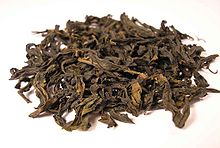Tea: there are many varieties out there. Interestingly, tea is categorized by color. For example, there is black tea, green tea, red tea, white tea and a hybrid variety called Oolong tea. Different geographical regions produce different types of tea. The majority of tea is produced from Asia, namely India, China, Japan and Taiwan.
Black teas are best served with milk because they possess a full-bodied and peppery taste. Examples of black tea from India are the Darjeeling, the Ceylon, the Assam, and the Nilgiri. From China, some examples of black tea are the Keemun, Pu-Er, Yunnan and the Lapsang Souchong. Black tea is fully oxidized. Black tea contains high level of antioxidants and helps increase blood flow to the heart.
The green teas have been gaining popularity due to its highly touted levels of antioxidants. Green tea is not oxidized and is made from leaves of Camellia sinensis. Green tea comes predominately from China and from Japan. Perhaps the most famous of all Chinese green tea comes from Hangzhou's West Lake (Xihu). It is called Longjing (or Dragon Well). They are renowned because the Longjing is harvested once a year in the Spring. The Longjing is made from the most tender tea shoots, not leaves. The four distinct characteristics of the Longjing tea is its emerald green color, aromatic flavor, sweet taste and beautiful appearance. The Japanese Gyokuro Imperial Green Tea is perhaps the finest green tea from Japan. The Gyokuro bushes are covered for several weeks before harvest with bamboo shades to increase the chlorophyll content of the leaves. The resulting harvest produces dark green leaves high in antioxidants, vitamins and amino acids. The Gyokuro leaves a sweet aftertaste.
Red teas are native to South Africa and are made from herbs called Rooibos. They contain no caffeine and has been said to help insomnia. They are full of polyphenois and flavonoids, which help protect the body from free-radicals that weaken natural defenses and eventually lead to aging and the onset of disease. They are sold with various flavors such as vanilla, mango, wild berries and oranges.
White teas are uncured and unoxidized and therefore the least processed. They are mostly found in the Chinese province of Fujian. Some of the names of white teas are the white peony, the silver needle and the shou mei. They all produce a sweet fragant taste. White tea is very high in antioxidants and very low in caffeine. Studies show that antioxidants in white teas help to reduce the risk of cancer, particularly lung, colon, and skin cancer; antioxidants also strengthen your immune system and help with metabolism.
Finally there is a hybrid tea called the Oolong. The Oolong tea slides in between black and green tea and hence is called a hybrid. These teas are most common in Taiwan and although they are dark in color, they contain caffeine comparable to those of the green tea. It has the color of black tea but the flavor of green tea. The Oolong tea leaves are 20-30% oxidized, dried and then lightly fired. Other names for the Oolong are the Black Dragon, the Ti Kwan Yin, and the higher grade Ti Kwan Yin are known as the Tung Ting (or frozen peak). In Taiwan, other varieties include the Dong Fang Mei Ren (or oriental beauty) and the Alishan Oolong. The flavor of the oolong should be a fruity aroma and a slight sweet taste. Oolong has been known to control cavities, help control type 2 diabetes and increase fat oxidation (therefore help lose weight).
Regardless of what your cup of tea may be. The bottom line is that tea is not only tasty, but is good for you! Therefore, sit back and enjoy this low calorie, tasty beverage!
Thursday, April 9, 2009
Subscribe to:
Posts (Atom)

